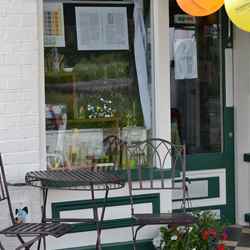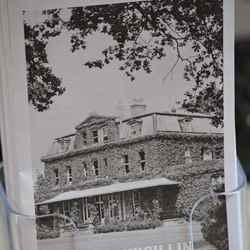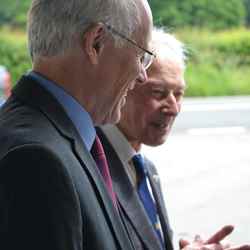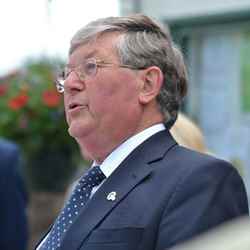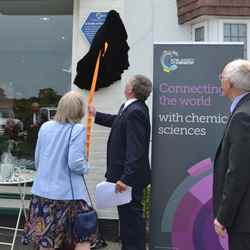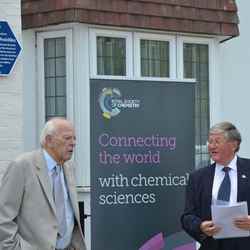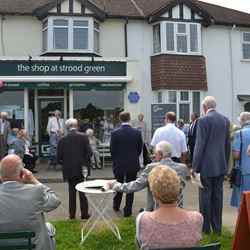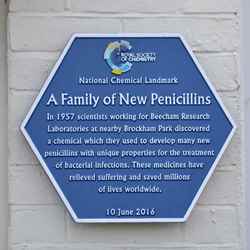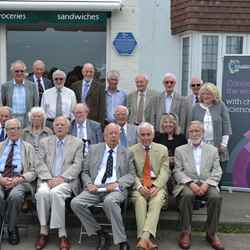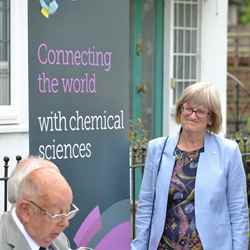Brockham National Chemical Landmark unveiled
A National Chemical Landmark plaque has been unveiled on the Community Shop at Strood Green in Surrey, near the former site of Beecham Research Laboratories.
Beechams' Brockham Park laboratories played home to the discovery and development of a large number of strains of penicillin, saving and improving countless lives for decades. That includes amoxicillin, which so many of us take for granted as a medicine GPs prescribe, even today when there’s huge concern about antimicrobial resistance.
The Chemical Landmark plaque reads:
A Family of New Penicillins
In 1957 scientists working for Beecham Research Laboratories at nearby Brockham Park discovered a chemical which they used to develop many new penicillins with unique properties for the treatment of bacterial infections. These medicines have relieved suffering and saved millions of lives worldwide.
Royal Society of Chemistry past president, Professor David Phillips explained the reasons behind the landmark scheme. He said: “If we want to connect people to chemistry, we need to give them concrete examples of how it affects them.
“Our Chemical Landmarks can help do this. They bring chemistry into the community and remind people of how chemists have contributed to human progress. That’s why we are putting this plaque outside the Community Shop here in Strood Green.
“The four scientists who discovered and developed these life-saving medicines were Ralph Batchelor, Peter Doyle, George Rolinson and John Nayler. Of the two living inventors George is unfortunately too frail to attend today, but I’m delighted that Ralph Batchelor has been able to join us.”
Chris Williamson, formerly a chemist with GSK, is now chair of the Royal Society of Chemistry Downland Local Section. He said: “It’s been great to see around 25 people from the Beecham Research Laboratories team joining the celebration in recognition of a Chemical Landmark plaque for work done back in 1957.
“Some pioneering chemists, scientists did some amazing work to isolate 6APA, so here we are to celebrate that achievement. We rightly acknowledge the technicians and everybody else. It is truly a team effort to pull these things together.”
One of those original inventors, Ralph Batchelor, spoke to a gathering made up of former colleagues, local residents, members of staff from Beechams’ successors GSK and members of the Royal Society of Chemistry Downland local section. He said: “It’s nice that it’s been recognised. I think most people don’t realise the significance of what was done. Other people had that opportunity – we now know that two or three other major pharmaceutical companies had worked on the problem but, to them it was a nuisance, to us it was something to investigate.
“It’s been very interesting to meet some of the Glaxo people from the factory to find out what they’ve done to the processes where we’d taken them and what they’ve done since – absolutely brilliant work they’ve done. It didn’t stop with us, which is good. It’s nice to meet people that have carried on from where we were."
The Royal Society of Chemistry’s Chemical Landmark Scheme recognises sites where the chemical sciences have made a significant contribution to health, wealth, or quality of life. The distinctive blue plaques are publicly visible, giving everyone an insight into chemistry's relevance to our lives.
National Chemical Landmark: A family of new Penicillins
Public outreach
- Tel:
- + 44 (0)1223 432200
- Email:
- Send us an email
Edwin Silvester
- Tel:
- +44 (0)1223 432294
- Email:
- Send me an email

